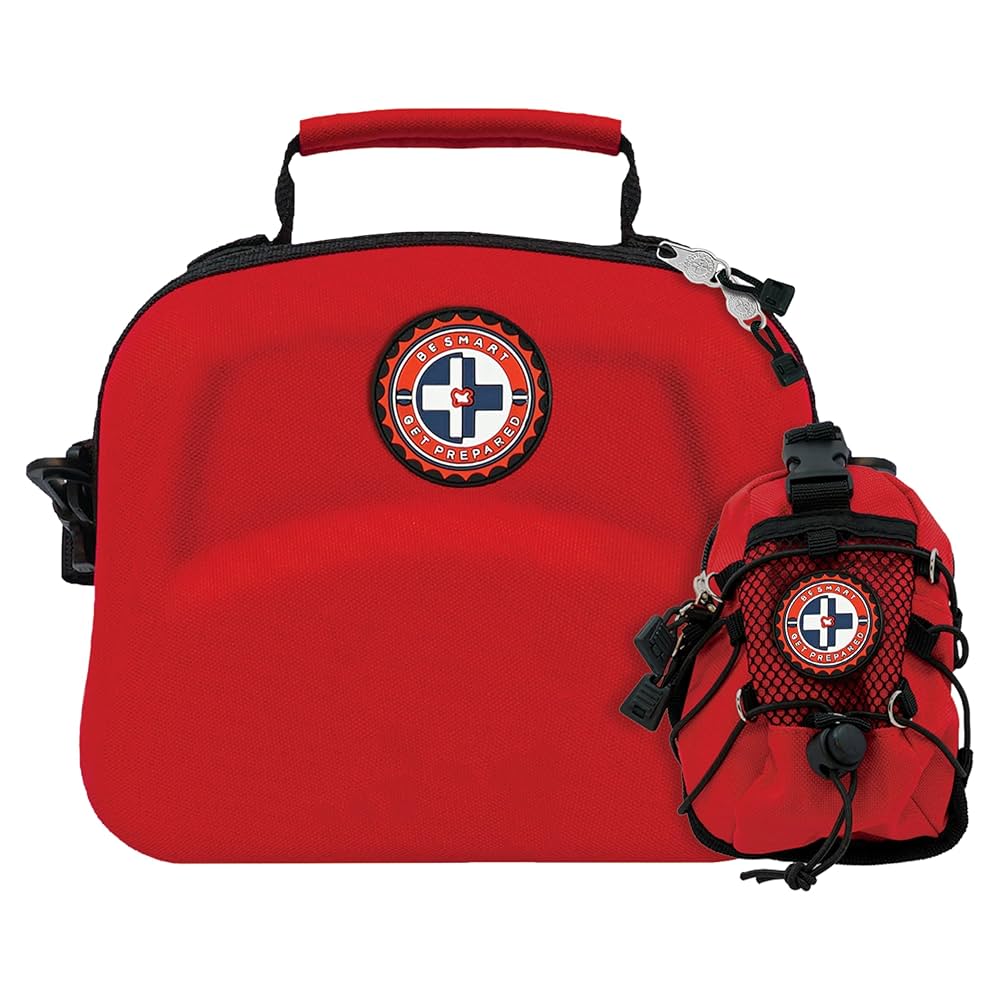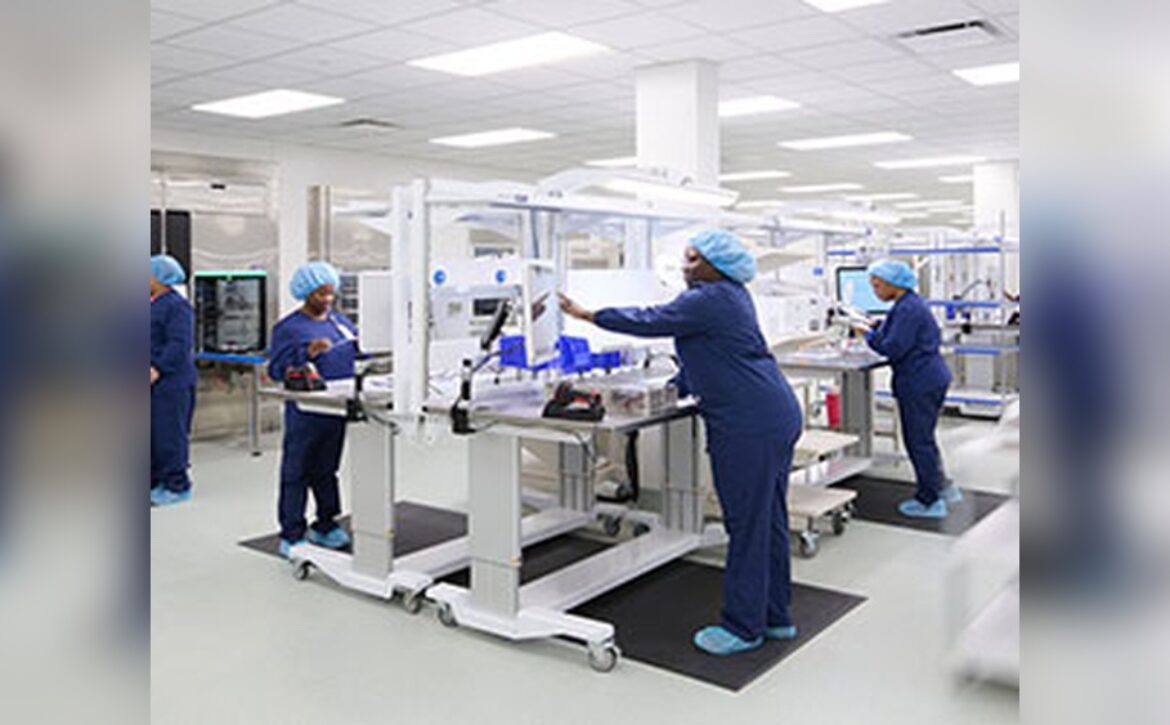
How to Become a Sports First Aid: Step-by-Step Guide
Have you ever watched a thrilling sports match and wondered about the team behind the scenes ensuring every player’s safety? As someone interested in sports first aid, you have the opportunity to be that vital part of the action.
Imagine the satisfaction of knowing you can help an injured athlete get back on their feet and into the game. The skills you’ll learn as a sports first aid professional are not only essential but empowering. By understanding the basics, you can be the hero who makes a difference when it counts the most.
Ready to dive into the rewarding world of sports first aid? Let’s explore how you can start your journey today.

Role Of A Sports First Aider
Sports First Aiders play a vital role in ensuring safety during athletic events. They learn to assess injuries quickly and provide immediate care. Courses offer essential skills like CPR and wound treatment, helping aspiring First Aiders become confident in emergency situations.
In the fast-paced world of sports, injuries can occur in the blink of an eye. That’s where a sports first aider steps in, playing a crucial role in ensuring athletes receive immediate and effective care. Whether you’re assisting on the sidelines of a local soccer match or at a major sporting event, being prepared and knowledgeable can make all the difference in an athlete’s recovery and confidence.
Understanding The Responsibilities
A sports first aider is not just a bystander with a first aid kit. You are an integral part of the team, responsible for providing immediate care when injuries occur. This includes assessing the situation swiftly and administering appropriate first aid measures. Your actions can help prevent further injury and support the athlete until professional medical help arrives.
Being Prepared For Any Situation
Preparation is key in sports first aid. Familiarize yourself with common sports injuries, such as sprains, fractures, and concussions. Ensure your first aid kit is stocked with essentials like bandages, ice packs, and antiseptic wipes. Regularly update your skills through certified first aid courses and stay informed about the latest techniques and protocols.
Effective Communication With Team Members
Communication is critical when handling sports injuries. Keep calm and convey clear instructions to athletes and coaching staff. Establishing a good rapport with the team can foster trust, making it easier to manage tense situations. How you communicate can significantly influence the athlete’s response to the treatment and their overall recovery experience.
Making Quick Decisions Under Pressure
In sports, decisions often need to be made in a split second. Develop the ability to think on your feet and prioritize actions based on the severity of the injury. Quick, informed decisions can help minimize damage and promote faster healing. Remember, hesitation can lead to complications, so confidence in your training and instincts is vital.
Ensuring Athlete’s Well-being Post-injury
Your role extends beyond the initial treatment. Follow up with athletes to ensure they are healing properly and adhering to recovery plans. Provide guidance on when they can safely return to play, prioritizing their long-term health over immediate performance. This holistic approach can significantly impact the athlete’s future in sports and their trust in your abilities. Being a sports first aider is a rewarding role that combines passion for sports with the dedication to helping others. By embracing this responsibility, you become a crucial part of the sporting community, ensuring the safety and well-being of athletes at every level. Are you ready to make a difference on and off the field?
Essential Skills And Qualities
Becoming a sports first aid professional requires certain skills and qualities. These are crucial for effective emergency response. They ensure the well-being of athletes. Understanding these skills can help you excel in this role.
Strong Communication Skills
Effective communication is vital in sports first aid. You need to convey information clearly. This helps in managing injuries efficiently. It also reassures injured athletes. Listening is equally important. Understand the athlete’s concerns and symptoms accurately.
Quick Decision-making Ability
In emergencies, decisions must be made swiftly. Quick thinking can prevent further injuries. It ensures timely treatment. Practice makes this skill sharper. Stay calm under pressure. Make informed choices that benefit the athlete.
Attention To Detail
Observing small details is essential. It helps in diagnosing injuries correctly. Missed details can lead to complications. Stay focused and thorough. Document every observation. This assists in accurate treatment and recovery plans.
Empathy And Compassion
Showing empathy comforts injured athletes. Compassionate care boosts their morale. It aids in faster recovery. Athletes feel cared for. This builds trust. A positive environment is crucial for healing.
Physical Fitness
Being physically fit is important. You may need to move quickly. Lifting or supporting athletes is part of the job. Physical stamina helps in these situations. Regular exercise keeps you prepared. Stay active to perform your best.
Required Certifications
Becoming a sports first aid professional requires proper certification. These certifications ensure you have the skills to handle emergencies. They are crucial for anyone involved in sports safety. Understanding the required certifications is the first step to becoming qualified.
Basic First Aid Certification
Basic First Aid Certification is the foundation for sports first aid. It covers essential life-saving techniques. You learn how to treat minor injuries and prevent complications. This certification is often the starting point for many.
Cpr Certification
CPR Certification is vital for any sports first aid role. You learn how to perform cardiopulmonary resuscitation. It is crucial in emergencies where breathing is impaired. Quick action can save lives on the field.
Sports-specific First Aid Training
Sports-Specific First Aid Training tailors the skills to sports settings. It focuses on injuries common in sports, like sprains or concussions. This training ensures you are prepared for the unique challenges of athletic environments.
Advanced Trauma Life Support (atls)
Advanced Trauma Life Support (ATLS) is recommended for serious sports injuries. It covers managing severe trauma cases efficiently. It is especially useful for high-contact sports. This certification enhances your ability to handle critical situations.
Automated External Defibrillator (aed) Training
AED Training teaches you how to use defibrillators effectively. It is important for cardiac-related emergencies. Knowing how to use an AED can be life-saving. This skill is essential for sports first aid professionals.
Continuing Education And Recertification
Continuing education keeps your skills up-to-date. Recertification ensures your knowledge stays relevant. Regular updates are necessary to maintain proficiency. Staying informed about new techniques is key to effective first aid.

First Aid Courses And Training
Becoming proficient in sports first aid requires dedicated training. First aid courses offer hands-on experience and essential knowledge. These courses are crucial for anyone involved in sports. Whether you’re a coach, parent, or athlete, understanding first aid can make a difference. Training equips individuals to handle emergencies promptly. It builds confidence and prepares you for unexpected situations.
Understanding The Basics
First aid courses cover fundamental skills. Learn how to assess injuries quickly. Understand the importance of keeping calm during emergencies. Courses teach you to identify common sports injuries. You’ll know when to call for professional help. Recognizing signs of concussions is vital. The right skills help reduce risks.
Practical Skills Development
Hands-on training is a key part of these courses. Practice bandaging and splinting techniques. Simulated scenarios enhance your decision-making skills. Learn CPR and the use of automated external defibrillators. These skills save lives in critical moments. Practical sessions boost your confidence in real situations.
Certification And Credibility
Completing a first aid course provides certification. This certification is recognized by sports organizations. It enhances your credibility as a sports first aid provider. Holding a valid certification shows your commitment to safety. It assures others of your preparedness in emergencies.
Choosing The Right Course
Many institutions offer first aid training. Consider courses that focus on sports-related injuries. Check for accredited programs with experienced trainers. Online reviews can guide your choice. Opt for courses that offer practical sessions. Ensure the certification is valid for your needs.
Continuous Learning
First aid skills require regular updates. Enroll in refresher courses to stay current. New techniques and guidelines emerge over time. Staying informed enhances your readiness. Continuous learning keeps your skills sharp. It ensures you remain effective in emergencies.
Gaining Practical Experience
Gaining practical experience is crucial to becoming a competent sports first aid provider. This journey requires hands-on training and real-world exposure. Such experience ensures readiness to handle emergencies during sports events. Let’s explore ways to gain valuable practical experience in sports first aid.
Participate In Community Sports Events
Volunteer at local sports events. This offers a great learning opportunity. Observe professional first aid providers in action. Understand how they manage injuries and emergencies. You will learn important skills that textbooks can’t teach.
Internships With Sports Teams
Seek internships with sports teams. Many teams offer positions for aspiring first aid providers. This experience exposes you to real-time situations. You will work closely with athletes and coaches. This helps build confidence and competence.
Attend Workshops And Training Sessions
Join workshops focused on sports first aid. These sessions provide practical insights. You will practice techniques in a controlled setting. Trainers share valuable tips and advice. This experience enhances your theoretical knowledge.
Network With Professionals
Connect with experienced sports first aid providers. Networking opens doors to mentorship opportunities. Professionals share their experiences and advice. This guidance helps you grow and improve your skills. Networking also helps in finding job opportunities.
Practice With Simulation Drills
Engage in simulation drills. These drills mimic real-life sports injuries. Practicing in a simulated environment boosts your confidence. You learn to respond quickly and effectively. Simulation drills prepare you for real-world challenges.
Building A Professional Network
Building a professional network is key for aspiring sports first aiders. Connect with coaches, athletes, and medical professionals. Attend workshops and local sports events to meet people and share expertise.
Building a professional network is a crucial step in becoming a successful sports first aid expert. Connecting with others in your field can open doors to new opportunities, offer valuable insights, and help you stay updated on the latest practices. Whether you’re just starting or looking to expand your network, strategic efforts can make all the difference.
Understanding The Importance Of Networking
Networking is more than just exchanging business cards. It’s about building relationships that can support your career growth. These connections can lead to job referrals, collaborations, or mentorship opportunities. Consider how a simple conversation with a seasoned professional could introduce you to new techniques or philosophies in sports first aid. Such interactions can be pivotal in shaping your approach and expanding your expertise.
Identifying Key Contacts In Your Field
Identify individuals who can impact your career positively. These could be experienced sports trainers, medical professionals, or even fellow first aid experts. Attend local sports events or conferences where you can meet these key players. Keep an eye on social media platforms, where industry leaders often share insights and opportunities for engagement.
Leveraging Social Media Platforms
Social media is a powerful tool for networking. Platforms like LinkedIn allow you to connect with industry experts and join groups dedicated to sports first aid. Engage actively by commenting on posts, sharing relevant content, and participating in discussions. Your visibility will increase, and you’ll start building relationships that could benefit your career.
Attending Workshops And Conferences
Workshops and conferences are excellent venues for networking. They offer opportunities to learn from experts and connect with peers who share your interests. Don’t just attend; be proactive in engaging with speakers and attendees. Ask questions, share your experiences, and exchange contact information for future collaboration.
Maintaining And Nurturing Your Network
Building a network is just the beginning. Regularly check in with your contacts, share updates on your work, and offer assistance when needed. Consider how a simple message or an invitation to collaborate can strengthen your relationships. Keep the communication lines open, and your network will continue to grow and evolve.
Evaluating The Impact Of Your Network
Reflect on how your network has influenced your career. Have you gained new insights, or landed opportunities through your connections? Ask yourself if you are actively contributing to your network’s growth. Are you sharing valuable information, or helping others achieve their goals? Your network’s impact is directly tied to your willingness to engage and give back.
Staying Updated With Current Practices
In the fast-paced world of sports, staying updated with current practices in sports first aid is crucial. Your ability to react swiftly and accurately can make a difference in an athlete’s recovery. Knowledge evolves rapidly, and it’s essential to keep pace with the latest techniques and standards.
Understanding Changes In Sports Medicine
Sports medicine is dynamic, with new research constantly shaping best practices. Keep an eye on recent studies and findings. Follow reputable journals and online platforms dedicated to sports science.
Attending Workshops And Seminars
Workshops and seminars offer valuable hands-on experience. These events are perfect for networking with industry professionals. You’ll gain insights directly from experts, enhancing your skill set.
Leveraging Online Courses
Online courses provide flexibility and convenience. You can learn at your own pace without geographical constraints. Many courses offer certification, adding credibility to your knowledge.
Joining Professional Associations
Professional associations often share updates on the latest practices. Membership provides access to exclusive resources and information. Being part of these groups connects you with like-minded individuals.
Engaging In Community Discussions
Online forums and social media groups are excellent for discussions. Share your experiences and learn from others in the field. Engaging with the community keeps your knowledge fresh and relevant.
Learning From Personal Experience
Reflect on your own experiences in sports first aid. Analyze situations where you applied your knowledge effectively. Use these reflections to identify areas for improvement and growth.
Staying updated is not just about acquiring information; it’s about applying it effectively. How are you ensuring that your skills remain sharp and relevant? The commitment to learning and adapting is vital for anyone serious about sports first aid. Remember, it’s not just about being prepared, but being prepared with the most accurate knowledge available.

Career Opportunities And Paths
Embarking on a journey as a sports first aid professional offers exciting opportunities. This field is essential in the world of sports, ensuring athletes stay safe. Understanding career paths in sports first aid can guide you towards a fulfilling profession. Let’s explore the diverse opportunities available in this field.
Sports Teams And Clubs
Many sports teams hire first aid professionals. They need experts for immediate care during events. Working with a team involves traveling and being part of the action. It’s dynamic and exciting. You get to be close to the games and athletes.
Schools And Colleges
Educational institutions often have sports programs. They require first aid specialists to support student athletes. It’s a stable career path. You help young athletes and ensure their safety during competitions. It’s rewarding to see them succeed while staying healthy.
Sports Events And Tournaments
Large sports events need first aid teams. These events are fast-paced. You provide crucial support to athletes. It’s thrilling to be part of major tournaments. You witness sports excellence firsthand and contribute to athlete well-being.
Fitness Centers And Gyms
Gyms and fitness centers often require first aid staff. They ensure safety during workouts and training sessions. This role is vital in promoting health and safety. You work closely with fitness enthusiasts, helping them stay injury-free.
Self-employment And Consultancy
Some professionals choose consultancy. They offer services to various clients. This path offers flexibility and independence. You can work with multiple organizations, tailoring your expertise. It’s an opportunity to grow your brand and skills.
Frequently Asked Questions
What Is Sports First Aid Training?
Sports first aid training involves learning essential skills to manage injuries on the field. It covers assessment, treatment, and stabilization of common sports injuries. Training includes CPR, wound care, and injury prevention techniques. It prepares individuals to respond effectively to emergencies during sports events, ensuring athletes’ safety and well-being.
How Can I Become A Sports First Aider?
To become a sports first aider, complete a certified training course. These courses cover injury assessment, CPR, and emergency response techniques. Many organizations, like the Red Cross, offer these programs. After training, you can assist athletes during sports events, ensuring their safety and quick recovery.
Why Is Sports First Aid Important?
Sports first aid is crucial for managing injuries promptly and effectively. Quick intervention can prevent minor injuries from becoming severe. It ensures athletes receive immediate care, reducing recovery time. Additionally, having a trained first aider at sports events enhances safety and provides peace of mind for athletes and organizers.
What Skills Do Sports First Aiders Need?
Sports first aiders need skills in CPR, wound care, and injury assessment. They should understand how to stabilize fractures and manage sprains. Communication skills are essential for coordinating with medical professionals. They should also be calm under pressure, ensuring effective and timely responses to emergencies.
Conclusion
Becoming a sports first aid expert is rewarding and impactful. You help athletes stay safe and recover quickly. Start with basic courses. Then, gain hands-on experience. Practice is key. Stay updated with latest techniques. Your skills can make a difference.
Remember, confidence grows with practice. Always be prepared for any situation. Encourage others to learn first aid too. Together, we can ensure safer sports environments. Your dedication can inspire others. Keep learning and improving. Make sports safer for everyone involved.





